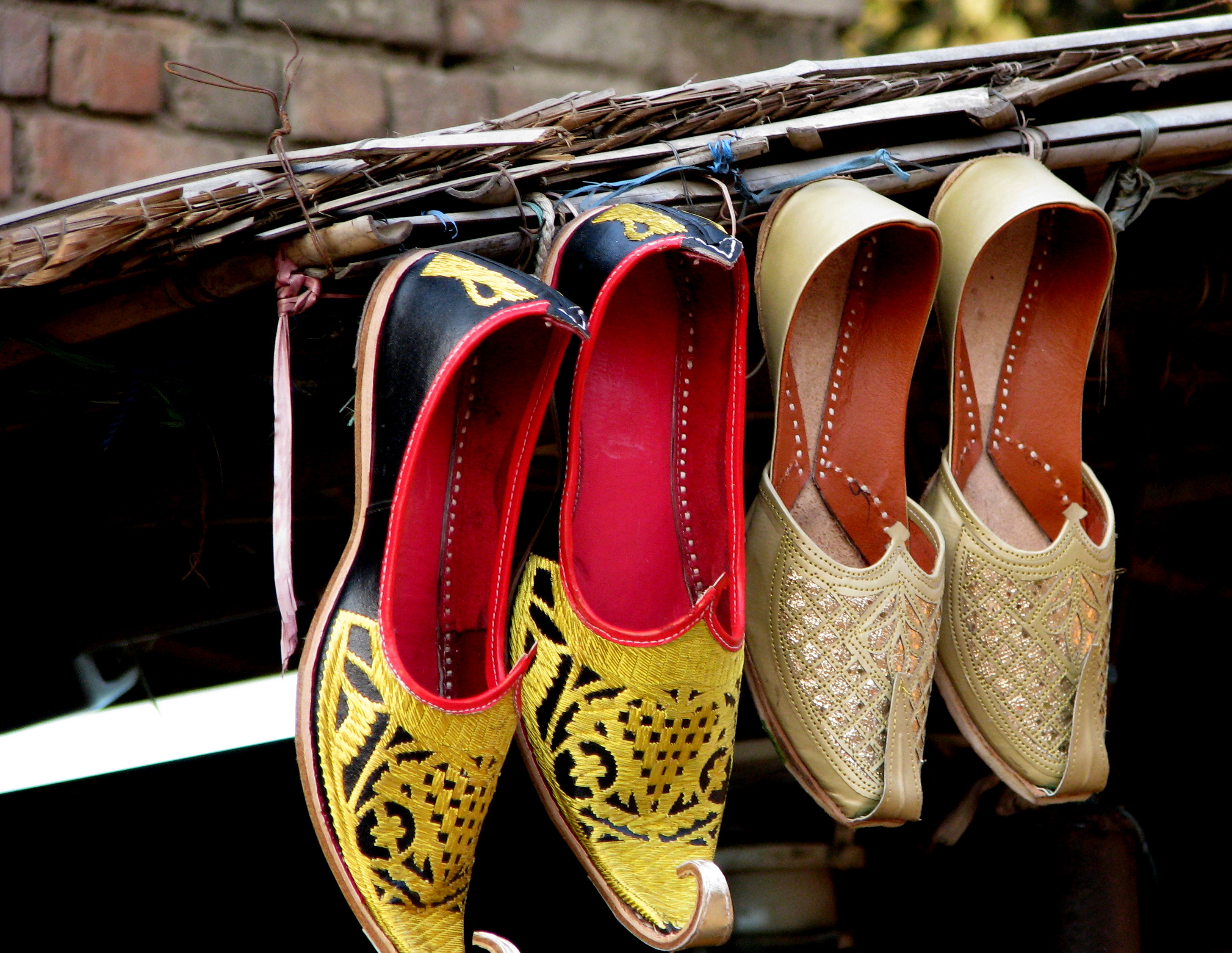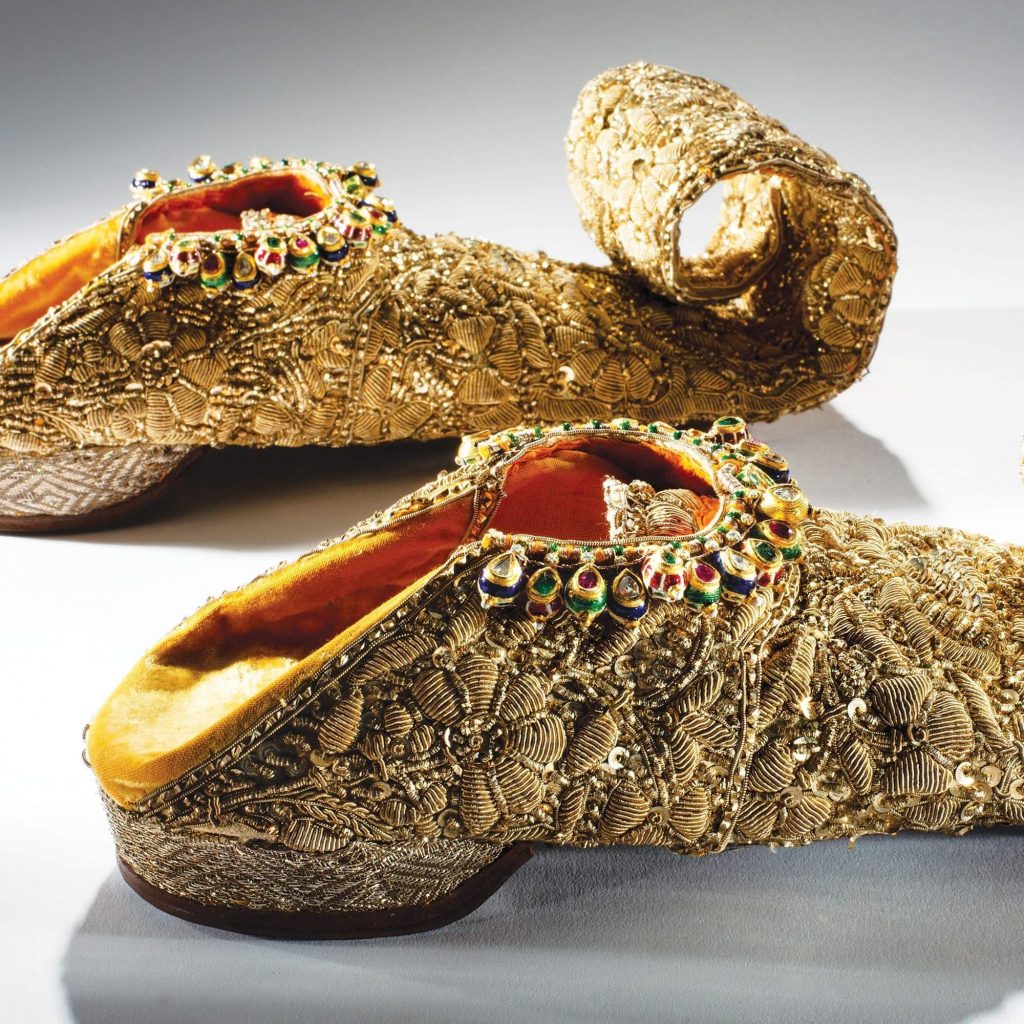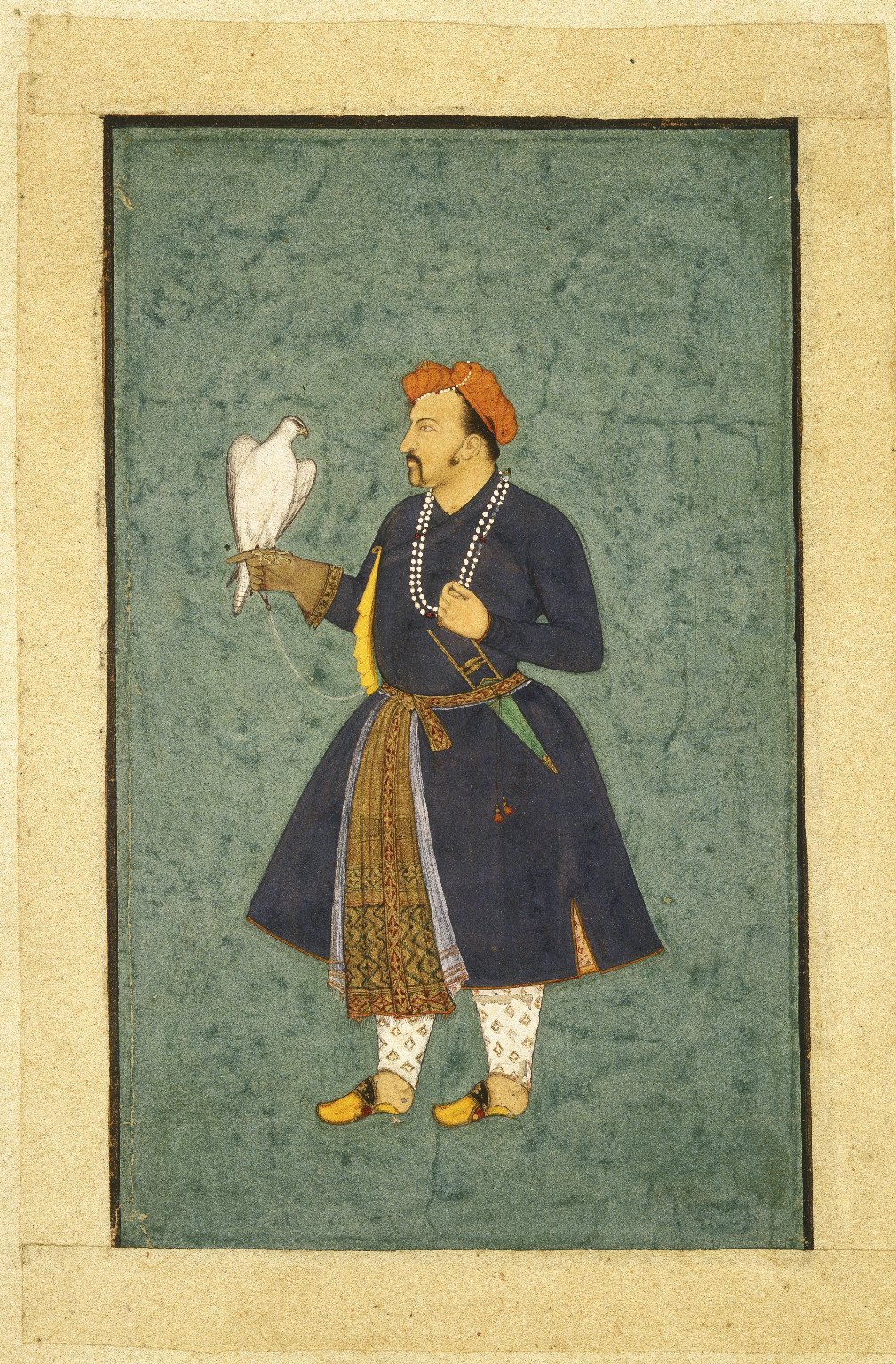What Are Khussa, Saleem Shahi, Jutti, Or Mojari Shoes?
What Are Khussa Or Saleem Shahi Or Mojari shoes?
There is a wide range of juttis, Saleem shahi, Khussa, or Mojari Shoes (also known as 'jeu-tea' in Hindi/Urdu or 'jeut-tii' in Punjabi) available for both men and women. These traditional ethnic IndoPak footwear are made of fine leather and are often delicately embroidered with threads or beads. They are slip-on in design, with a high back that rises to the Achilles tendon and a round or M-shaped, heavily-embroidered upper that covers the toes, leaving the top of the foot nearly bare. Some juttis feature extensive hand-done embroidery. During certain festivals, special juttis are also fitted to the feet of cows. In other parts of India, juttis are commonly referred to as mojari's, while in Pakistan they are known as khussas. They have gained popularity in the West as well. It is believed that one of the earliest forms of footwear worn on the Indian subcontinent was a wooden sandal, which dates back to around 200 BC. During the Buddhist period from the 3rd to 4th centuries, it was common to wear strapped sandals, and Indian subcontinent kings often wore sandals adorned with precious jewels. Jain literature also mentions the use of leather for making shoes to protect the toes from injury, using the hides of cows, buffaloes, goats, sheep, and other wild animals.
Saleem Shahi shoes

Saleem shahi is probably one of the most recognizable footwear styles in the world. They got their start back in the 1800s when they were known as “Mojarris” or “The Moorish Style.” Since then, they have become popular all over the globe!
Salim shahis are characterized by thick, square-shaped heels that get lower as you walk. This unique shape is what gives them their name — Saleem means “low foot” in Arabic.
A second characteristic is how the laces are tied. There are two different types of tying patterns used for these shoes. One type uses very long lace pieces that can be difficult to manage at times. The other style attaches shorter lace strips together with small knots, which are much easier to coordinate at events.
What makes this style special is not just its look, but also how comfortable they are! Saleem shahis are designed to conform to the natural shape of your feet, making them perfect for walking or dancing. Because of this, many people refer to them as “dance shoes” or even “heel dancers.
Definition of Mojari shoes
Mojari footwear is an exotic-looking pair of leather or plastic slippers that are typically seen being worn in Arab countries. They are known for their striking pattern and unique style.
The patterns used to make these slippers beautiful are usually very elaborate, such as floral or geometric designs. Some even have pictures or writings printed onto them.
These designs often use many different colors which match the color scheme of the room where the person wearing them is located.
The mojari, a type of traditional IndoPak footwear, originated during the Mughal Empire and is known for its opulent and ornate style. These slippers, which are also referred to as Khussa, feature upturned toes and were often woven with gold-silver zari (thread) and adorned with jewels to display the wealth and power of their wearer. They were originally made of pure leather and were renowned for their intricate embroidery and various embellishments, giving the wearer a unique and ethnic look for any occasion, including everyday wear, weddings, religious ceremonies, parties, and festivals. Despite their origins, mojaris continue to be popular to this day.
History of Khussa shoes

There are two main styles of footwear that have become popular worldwide, including in IndoPak– khussas, and mojaris. Both were invented many years ago, but it is the latter ones that have really taken off.
Khussas originated back in the 18th century in Afghanistan, Pakistan, and Iran. They are very well known for having thick soles with an attached boot or sock. The feet look slightly lifted off the ground due to this effect!

These days, most people know what a khussa shoe looks like, but not everyone knows who designed them! Originally, these types of footwear were made solely by artisans in rural areas. It was only recently that manufacturers started producing large quantities of them.

Many companies still design their khussas locally, so they might not be familiar to other experts. However, there are some major brands such as Adicolor, Champs Sports, Etnies, Forum, Florsheim, Giuseppe Zanotti, Havaianas, Lyle’s, Pensar, River Island, Vionic, and Zens which all use local craftsmen to make theirs.
Mojari shoes come from Morocco and Spain and are similar to khussas except for one small detail- they do not have an ankle strap! This allows your foot to move more easily, making them perfect for dancers and gymnasts.

History of Saleem Shahi shoes
Many consider Saleem shahi to be an elegant classic style shoe that has been around for centuries! These beautiful, highly styled footwear designs are characterized by rounded toe shapes with soft leather uppers and elaborate styling.

An event involving a bhisti, or water carrier, changed the course of IndoPak history when he rescued Humayun, the second Mughal emperor, from drowning in the Ganga River during a war against the Afghans. The bhisti, named Nizam, inflated his mashaq (a goatskin bag) and used it as a float to help Humayun cross the water. Humayun is said to have rewarded Nizam's bravery by crowning him king for a day as a sign of his gratitude. In celebration, the bhisti invited other leather workers from all over to share in his good fortune, laying the foundation for the development of Agra's renowned leather industry. Agra became known as a center for handmade shoes during the reign of Akbar, who was reportedly impressed by the skill of the Bhisti community and ordered shoes for the Mughal infantry, which further fueled the production of these items.
History of Mojari shoes

During the Mughal Empire, mojaris, a type of traditional IndoPak footwear, gained widespread popularity among the kings and queens of India's wealthiest period. These slip-on shoes, which were particularly favored in the Rajasthan region, were characterized by their design, which left the side and back of the foot almost bare. The Mughals were the first to extensively support the production of mojaris, which continue to be celebrated for their beauty and craftsmanship.
Popular Khussas shoes
Recent trends in footwear fashion are khussas or mojari shoes. These ankle-strap shoes were first seen back in the 1920s, but they have recently become very popular.
Khussas originated in India and then made their way into Europe where it was modified to fit Western feet better. The most famous styles of khussa are the drop-toe shoe with a pointed toe and an ankle strap.
Some people also refer to these as drop-heel shoes because of the lower heel that is typically found in this style. However, be aware not all drops are considered true khussas! That would include heeled sneakers like Vans!
Why Is It Important To Know About Mojaris And Khussas?
It’s important to know what kind of footwear your favorite celebrities are wearing so you can find some inspiration from that. Some of the best-known brands of khussa or mojari shoes include Aldo, Asics, Calvin Klein, Converse, Emporio, Fendi, Giuseppe Zanotti, Givenchy, Hebe, Indochino, Mango, Naot, Originals by Zappos, Puma, Rocco, Sergio Rossi, Shoe Palace, Skechers, Sun feels, Toms, UGG Australia, Umbrella, Vicenza, YEEZY and ZOIC.
Popular Saleem Shahis shoes

Photo by Nida on Pexels
Recent trends in footwear are khussas or Saleem shais, also known as mojari shoes. These ankle-strap shoes were first popularized by South Asian fashion brands like Reebok and Gotta Run Crew!

Khussas typically have very short, closed toes that show just the tip of each toe. The shoelaces can be tied at several positions, making it easy to access them for modification or switching out styles.
Saleem, which are similar to kajals (eyeliner) but with laces instead, have open tops that showcase the entire foot. They’re usually one solid color scheme that goes well with most other clothes colors.
What makes these types of shoes trendy is their variety of usages. Some people wear them exclusively dressy, while others use them more casually.
Popular Mojaris shoes
The most popular style of mojari shoe is the drop-toe, which has become very fashionable across all footwear styles. These are not only limited to being fashion statements but also practical for everyday use.
The drop toe comes from Middle Eastern clothing such as those seen in Turkey and Iran. In fact, it was so popular there that it spread into other cultures!
These days, you will see many variations of the drop-toe including rounded or square toes. Many designers have made their own unique take on this classic design. - French designer Olivier Theyskens even won an award for his version!
Another famous variation is the slip-on moccasin, sometimes referred to as “sneaker” shoes due to their similar look. Moccasins can be found with either smooth leather uppers or textile uppers, and usually feature soft wool or cotton padding.
What makes them different than regular sneakers is that they do not need to be pulled on over your foot like casual sneakers. They typically have ankle straps or laces that make getting onto your feet quick and easy.
Comments
Post a Comment